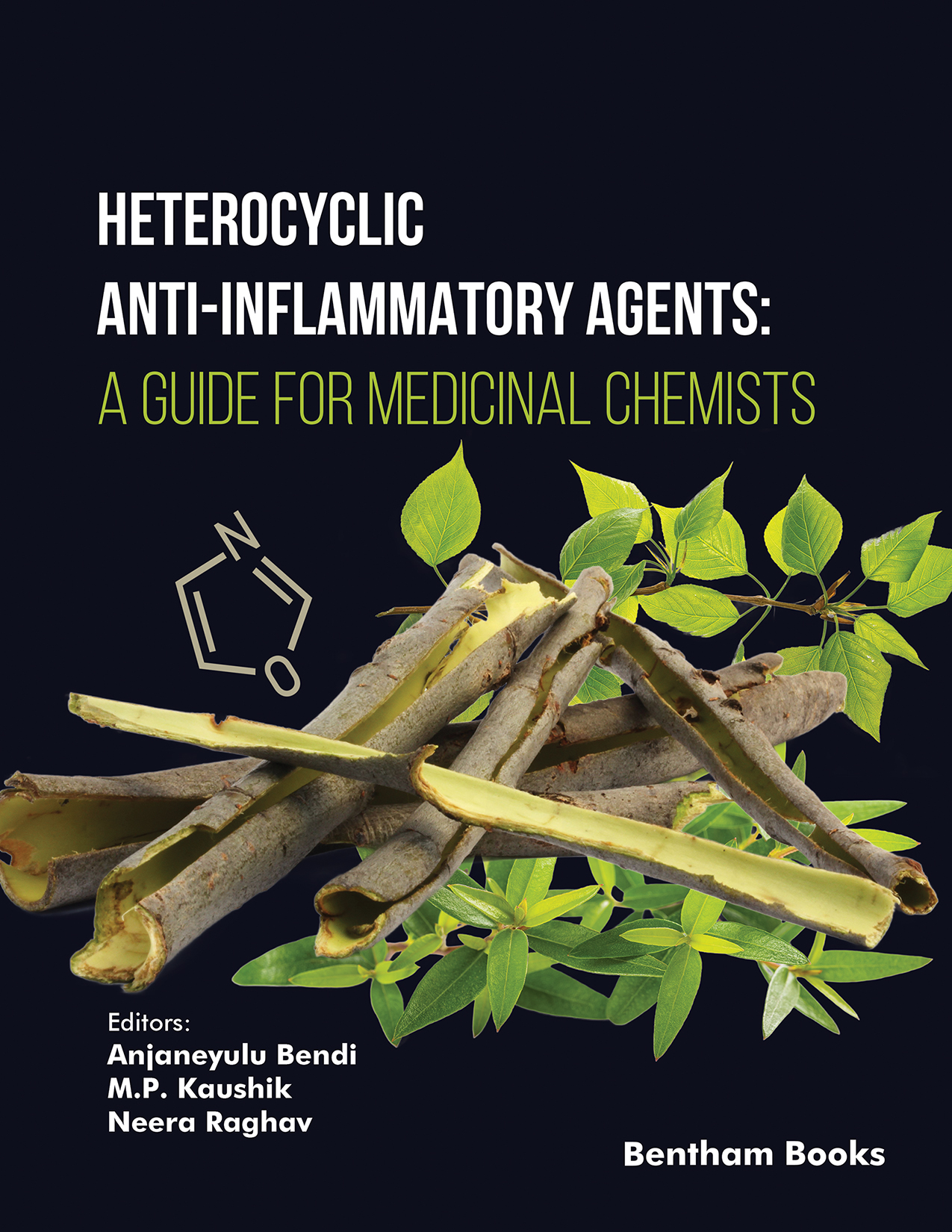Are anti-inflammatory agents really requisite?
In ancient Egypt, Ebers Papyrus suggested rubbing a decoction of dried myrtle leaves on the back and abdomen to alleviate womb rheumatic pains about 3,500 years ago. A thousand years later, Hippocrates suggested to use the willow bark juice to reduce the fever and labour pains, and also recommended to use the poplar tree juice to treat eye problems. Celsus identified the four primary symptoms of inflammation (rubor, calor, dolor, and tumor, or redness, heat, pain, and swelling) in A.D. 30 and used willow leaf extract to treat them. This journey of utilizing extracts from different natural sources to reduce inflammation laid the foundation for aspirants in the modern era to develop novel drugs to treat different kinds of inflammation. Nowadays, different heterocyclic compounds have been used as anti-inflammatory agents.
This book highlights the cutting-edge experimental research on a variety of heterocycles used as anti-inflammatory agents in ten chapters. In
Chapter 1, authors have briefly discussed the role of pyrimidine and pyrimidinone derivatives in the reduction of inflammation.
Chapter 2 addresses the importance of 1,2,3- and 1,2,4- triazoles and their derivatives as anti-inflammatory agents. The chemistry of imidazole and benzimidazole derivatives to deal with the different kinds of inflammation has been discussed in
Chapter 3.
Chapter 4 describes the synthesis of different oxazole, oxadiazole, isoxazoline, and oxazoline derivatives along with their biological evaluation as anti-inflammatory agents. A brief discussion of the chemistry of thiazole and thiazolidinone derivatives related to reducing inflammation has been described in
Chapter 5.
In
Chapter 6, authors have a special focus on exploring the chemistry of pyrazole and pyrazoline derivatives as anti-inflammatory agents.
Chapter 7 deals with the importance of carbazoles and their derivatives in reducing different kinds of inflammation. The chemistry of azipines, quinolines, and coumarins has been discussed as anti-inflammatory agents in
Chapter 8,
Chapter 9 and
Chapter 10.
In conclusion, we would like to say that the book's goal is to give an overview of the interesting research that is being done to design and make the new heterocycles as anti-inflammatory drugs. We hope that the content of this book will pique the interest of aspiring researchers everywhere and inspire them to continue their research in exploring novel heterocycles to treat different kinds of inflammation. We also hope that the book will be helpful to researchers, academics, and business people who have a strong interest in this research area.
We would like to express our admiration and gratitude for the efforts of all the authors who have worked enduringly on preparing the content of this book. We would also like to extend our heartfelt gratitude to the publishers and their employees for the efficient handling of the project at all stages. Lastly, we want to thank our family members for their unwavering support throughout the whole journey.
Anjaneyulu Bendi
Department of Chemistry, Presidency University
Rajanukunte, Itgalpura, Bangalore-560064, Karnataka
India
M. P. Kaushik
Amity University, Gwalior
Madhya Pradesh-474005
India
&
Neera Raghav
Department of Chemistry
Kurukshetra University
Kurukshetra-136119, Haryana
India

